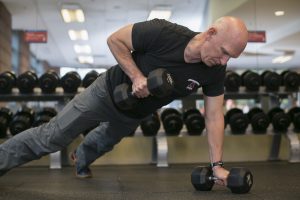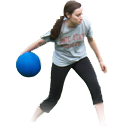
Could Intermittent Fasting Actually Help You Live Longer?

Over the past couple years, intermittent fasting has gained significant attention for its potential role in weight loss, but recent research suggests there may be far more benefits to the strategy than just whittling your middle — it’s possible it might even extend your life.
In a review article published in The New England Journal of Medicine, neuroscientist Mark Mattson, PhD, of Johns Hopkins Medicine looked at numerous intermittent fasting plans and concluded that two, in particular, are especially effective: either restricting your eating time to a 6–8 hour window every day, or a technique called 5:2 fasting that involves eating normally for five days and then eating only one moderate-sized meal two days per week.
“We are at a transition point where we could soon consider adding information about intermittent fasting to medical school curricula alongside standard advice about healthy diets and exercise,” he notes.
SOLID RESEARCH
Why would something as simple as not eating for a big chunk of time help you live longer? The answer lies in the breadth of benefits that have been found in both animal and human studies.
For example, fasting has shown improvements in blood pressure and resting heart rate, making it advantageous for cardiovascular health. Several studies have also suggested it may be effective for weight loss, which can help prevent obesity and diabetes — which have both been connected to shorter lifespans.
A 2018 study done on mice showed that when animals ate only one meal per day, and therefore had a longer fasting period, they not only had longer lifespans, but also demonstrated considerably less risk for age-related liver disease and metabolic disorders.
In his review, Mattson says studies indicate fasting improves blood sugar regulation, lowers inflammation and increases resistance to stress. All of those can have significant effects when it comes to longevity.
PLAYING WITH TIME
Like any strategy that involves changing how you eat, individual results will vary, especially if you make some initial missteps like overeating during your “food window,” choosing unhealthy foods, being sedentary and making drastic changes.
Also, keep in mind that you may need to play around with variations on intermittent fasting to find what works best for you. Although Mattson indicated that the time-restricted window of 6–8 hours or the 5:2 approach seemed the most effective, neither of those might be the best fit for you, and that’s OK. You can still do intermittent fasting using a different tactic.
For example, you might expand your eating window to 10 hours, or you can play around with the number of fasting days, according to Dr. Luiza Petre, a cardiologist who practices intermittent fasting herself and advises the strategy for patients.
She notes that the 5:2 plan can be tweaked to 7:1 or 1:1, based on how someone wants to implement intermittent fasting in day-to-day life.
“When you’re getting started, it’s much better to see this as a long-term strategy and experiment with different schedules, rather than think you need to stick to one specific schedule because that’s what worked for a friend or family member,” Petre says.
GETTING STARTED
Intermittent fasting doesn’t involve specific foods, but rather, a strict schedule regarding when you eat, says Dr. Jason Fung, author of “The Complete Guide to Fasting.” That said, it’s a great opportunity to overhaul your diet if you’ve been getting a little too junk-food-reliant lately.
“One major advantage to intermittent fasting is that it can be part of any eating plan you’re following like low-carb, ketogenic, Paleo or something else,” he says. “It can also be a nice kick off to changing your eating habits to include healthy foods if you’re not doing that already.
The easiest way to try intermittent fasting is to do the most common variation first, he suggests, which is an 8-hour block, followed by fasting time that includes sleep. For example, “breaking your fast” — which is how breakfast got its name, after all — at 9 a.m. and having dinner at 5 p.m. and then not eating again until the next morning.
Not only can this confer the benefits Mattson mentions, but it also gives you additional advantages in terms of digestion and sleep quality, since going to bed on a fairly empty stomach has been shown to be better for both of those issues.
Fung suggests trying that for about a week or so to give your body time to adjust. After that, you’ll know better if you have to tweak your time block to some degree, or if you’d prefer to switch to a different variation like the 5:2 eating plan or a similar on-off fasting schedule.
Giving yourself at least a few days — and ideally longer — every time to switch strategies is important, because it allows you to see improvements in non-food areas such as more energy, deeper sleep and mood. Just as you might with food tracking, record the effects of intermittent fasting daily to determine how well you’re adjusting.
It’s also possible that intermittent fasting is not your groove, and that’s OK, too. But most likely, simply trying this way of eating is likely to make you more conscious not just of when you eat, but also what you’re consuming.
“Even if you decide not to do this type of strategy, you’ll probably create more awareness around your food,” says Fung. “And that is always a good thing.”




